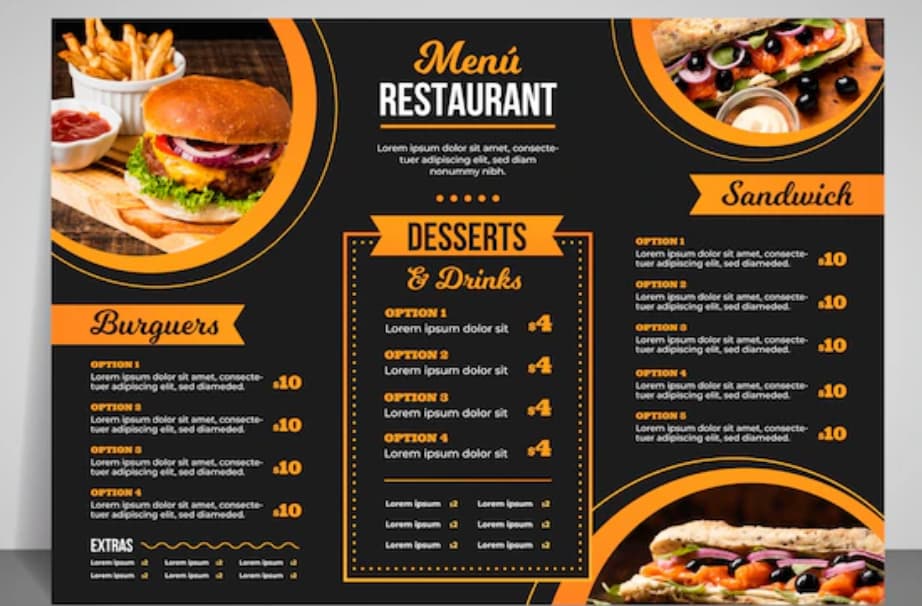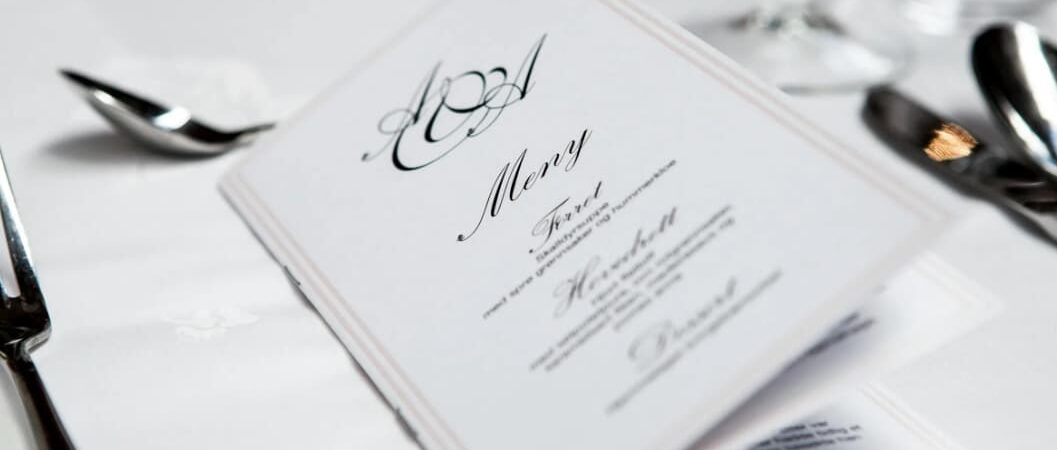What Constitutes a Menu-making App?
Furthermore, menu-making apps cater to the evolving expectations of modern diners who seek interactive and visually appealing menu experiences. Integration with social media platforms enables seamless sharing of menu updates and promotions, enhancing a restaurant’s online presence.
For chefs and restaurateurs, the ability to swiftly update menu items, reflect seasonal changes, and communicate special offers becomes indispensable. The dynamic nature of these apps ensures adaptability to industry trends and customer preferences.
The incorporation of analytics tools within these applications provides valuable insights into customer preferences and popular dishes, assisting restaurants in refining their offerings. By leveraging technology, these apps contribute to streamlining operations, reducing waste through efficient inventory management, and ultimately elevating the overall dining experience for both establishments and patrons alike. In an era where innovation is a key driver of success, menu-making apps stand as a testament to the transformative power of technology in the culinary landscape.
The Imperative Role of Menu-making Apps for Restaurants
In the relentless pursuit of efficiency, restaurant owners delve into solutions that expedite processes and diminish errors. Custom menu creation stands as a pivotal aspect in this quest, as menus drive sales and augment order value. A well-crafted menu enhances the overall dining experience, providing customers with a seamless and enjoyable journey through diverse culinary offerings.
Menus are the face of a restaurant, influencing customer decisions and shaping their perception of the establishment. The efficiency of menu creation directly impacts the restaurant’s ability to adapt to changing trends, introduce new items, and convey its unique identity to patrons. As the heart of every restaurant business, menus require constant attention and adaptation to stay relevant in the highly competitive industry.
Recognizing this imperative, we present a curated list of the 10 best menu-making apps, aiming to streamline the menu design process. These apps offer features such as professionally designed templates, customization options, and user-friendly interfaces, all aimed at simplifying the intricate process of menu creation. By integrating these tools, restaurant owners not only save time but also ensure their menus are visually appealing, informative, and aligned with the brand identity.
The quest for the ideal menu-making app involves careful consideration of factors such as time-saving capabilities, customization options, efficiency improvements, and cost-effectiveness. Through this guide, we empower restaurant owners to make informed decisions, elevating their menus and, consequently, enhancing the overall dining experience for their customers.
The Quest for the Ideal App: A Comparative Matrix
In the quest for the ideal app, a thorough comparative matrix is indispensable for assessing the myriad features and functionalities of 10 diverse menu-making apps. Each app undergoes meticulous scrutiny, considering factors like user interface intuitiveness, customization options, pricing structures, and cross-platform compatibility.
The first criterion, user interface intuitiveness, delves into the app’s ease of use, ensuring that even users with minimal technical expertise can navigate effortlessly. Customization options explore the extent to which menus can be tailored to suit individual preferences, catering to a variety of culinary businesses.
Pricing structures are pivotal, dissecting the cost-effectiveness of each app and uncovering hidden fees. Cross-platform compatibility evaluates the seamless transition between different devices and operating systems, ensuring flexibility and accessibility.
This comparative matrix serves as a compass, guiding users through the intricate landscape of menu-making apps. By unraveling the intricacies of each contender, it empowers decision-makers with the knowledge needed to select an app aligning with their unique requirements. In the dynamic realm of culinary technology, this comprehensive analysis is a beacon illuminating the path to the perfect app.
1. UpMenu
UpMenu stands out in the menu-making landscape with a comprehensive food ordering system, complemented by user-friendly mobile apps that facilitate seamless transactions. The no-code app-builder distinguishes itself by simplifying the customization process, allowing businesses to efficiently manage modifiers and create QR code menus tailored to their unique offerings.
Noteworthy is UpMenu’s commitment to enhancing the dining experience through efficient tableside ordering, streamlining the interaction between customers and staff. The subscription-based pricing, starting from $49, positions UpMenu as a cost-effective solution for businesses seeking a robust and versatile menu-making app with a focus on user experience and functionality.
2. Canva
Canva, a versatile platform, provides a wealth of resources for crafting restaurant menus, boasting customizable templates, a rich array of fonts, and access to free stock photos. The free plan offers a taste of its capabilities, while those seeking additional perks can opt for the premium version at a yearly cost of $119.99. With this subscription, users unlock an expansive library of templates, ensuring diverse and polished menu designs. Moreover, Canva’s emphasis on brand-building tools empowers restaurants to establish a cohesive visual identity, making it a valuable investment for those prioritizing aesthetics and brand consistency in their menu presentation. For clarity, watch the video:
3. iMenuPro
iMenuPro, an online design and management software, streamlines the process of crafting visually appealing menus. Its ready-to-use templates and special highlights contribute to eye-catching designs that captivate customers. A notable feature is its QR restaurant menu maker, aligning with modern dining trends and enhancing customer convenience.
Priced at $15 per month, iMenuPro offers an affordable solution without compromising on functionality. This monthly cost includes ongoing access to its robust set of tools, ensuring that businesses can continuously adapt and refine their menus. With iMenuPro, the investment in creating compelling and dynamic menus becomes not just a one-time effort but a sustainable practice for culinary businesses aiming to stay fresh and engaging.
4. Adobe Express
Formerly known as Adobe Spark, this platform brings forth a seamless menu-making experience. Boasting ready-to-use menu templates and access to royalty-free Adobe Stock photos, it enables businesses to create visually stunning menus effortlessly. The inclusion of a QR code menu aligns with modern preferences, providing a tech-savvy solution for easy customer access.
For those seeking an elevated experience, the Premium version, priced at $9.99 per month, unlocks the full spectrum of features. This subscription ensures that businesses can leverage advanced tools and capabilities, allowing for even greater customization and creativity in menu design. Adobe Spark’s Premium offering positions itself as an accessible yet powerful resource for businesses committed to delivering exceptional visual experiences through their menus.
5. MustHaveMenus
This web platform caters to restaurants by providing a user-friendly interface for creating and managing menus, offering configurable templates for streamlined customization. The Pro version, priced at $24.92 per month, takes menu management to the next level with advanced options. This subscription ensures that establishments have access to a comprehensive set of tools, enabling intricate menu designs and efficient management. With its focus on both user convenience and advanced functionalities, the Pro version stands as a valuable asset for restaurants aiming to elevate their menu presentation and streamline the ongoing process of adapting to evolving culinary trends and customer preferences.
6. Visme
This online tool simplifies menu creation through intuitive drag-and-drop graphic design tools, providing flexibility for both one-sided and two-sided menu formats. Priced at $29.00 per month, the starter plan makes professional menu design accessible. With its user-friendly features and customizable templates, businesses can efficiently craft visually engaging menus that resonate with their brand identity. This cost-effective solution ensures that establishments of various sizes can enhance their menu presentation without compromising on design quality or breaking the bank.
7. PosterMyWall
This web design tool offers a creative outlet for crafting visually appealing designs, covering a range of materials such as posters, flyers, and more. Priced at $9.95 per month, the Premium subscription unlocks advanced features, enabling users to elevate their design projects. With an emphasis on user-friendly interfaces and a plethora of design options, this subscription ensures that individuals and businesses can consistently produce professional and eye-catching visual content. The affordable monthly cost makes it an accessible choice for those seeking a versatile design tool to bring their creative ideas to life across various mediums.
8. Flipsnack
Specializing in interactive digital publications, Flipsnack provides user-friendly design tools for effortless content creation. While it may lack specific modifiers management for menus, its strengths lie in the realm of engaging and dynamic digital materials. Notably, Flipsnack supports the trend of modern dining by offering QR code generation for menus, enabling seamless digital access for patrons. This feature aligns with the evolving preferences of customers, showcasing Flipsnack as a valuable tool for businesses aiming to enhance their digital presence and deliver interactive and accessible menu experiences to tech-savvy audiences.
9. Piktochart
Piktochart, an online design tool, caters to a versatile range of visual content, from presentations to posters and marketing materials. The platform’s user-friendly interface simplifies the creation process, providing menu templates for businesses in the culinary realm. The inclusion of unlimited access to stock photos enhances creative possibilities. While specific costs are not specified, Piktochart’s flexibility and features make it an intriguing option for those seeking diverse design capabilities. Businesses can leverage its resources to craft visually striking menus and promotional materials, adapting to their unique branding and communication needs without the constraints of predefined cost structures.
10. Fotor
Fotor, an online photo editing application, introduces customizable menu templates into its repertoire. While it may not include specific modifiers management, its user-friendly interface caters to straightforward menu design. The platform empowers businesses with accessible tools, allowing them to craft visually appealing menus without a steep learning curve. Fotor’s emphasis on simplicity positions it as a viable option for establishments prioritizing ease of use in their menu creation process. By incorporating customizable templates, Fotor provides a practical solution for those seeking a streamlined approach to design, making it an attractive choice for businesses with diverse visual communication needs.
Crafting Your Own Food Menu: A Creative Endeavor
Embarking on the journey of crafting a food menu involves several creative steps:
- Brainstorm: Select dishes, considering the target market, restaurant concept, and dietary needs;
- Menu Layout: Organize the menu into categories for improved navigation;
- Write Descriptions: Create enticing descriptions, highlighting ingredients and unique cooking methods;
- Include Prices: Determine prices for each item, ensuring consistency with your target market;
- Visual Design: Draft the layout on paper before commencing digital design, considering page count and size;
- Fonts and Colors: Choose readable fonts and colors aligning with your restaurant’s theme or logo.
Whether opting for the tangible appeal of printed menus on quality paper or the convenience of digital menus for online accessibility, the choice lies at the intersection of practicality and customer engagement. Printed menus exude a classic charm and are ideal for traditional settings, while digital menus cater to the tech-savvy audience, providing interactive elements and real-time updates.
This creative journey allows restaurants to showcase their brand personality through menu aesthetics, creating a memorable and immersive dining atmosphere. The flexibility to switch between print and digital platforms offers adaptability to diverse customer preferences, contributing to a harmonious fusion of tradition and innovation within the culinary landscape. Ultimately, this thoughtful approach not only enhances cost-effectiveness but also adds a distinctive touch to the overall dining experience.

In conclusion
In conclusion, the quest for the best menu-making app is a pivotal step towards revolutionizing the way restaurants craft, present, and manage their menus. With a myriad of options available, our meticulous assessment of diverse apps encompassed factors like user interface, customization, collaboration tools, pricing models, and security measures.
These menu-making apps don’t just serve as practical tools; they represent a transformative force within the culinary industry. From the seamless integration of advanced features like inventory management and recipe tracking to the dynamic adaptability required in the ever-evolving world of gastronomy, these apps empower restaurants to stay ahead.
Whether opting for the tactile elegance of printed menus or the digital dynamism of online platforms, the creative endeavor of choosing the right app reflects a commitment to enhancing customer experience. In the realm of culinary innovation, the best menu-making apps stand as indispensable allies, merging tradition with technology to shape the future of dining establishments.
